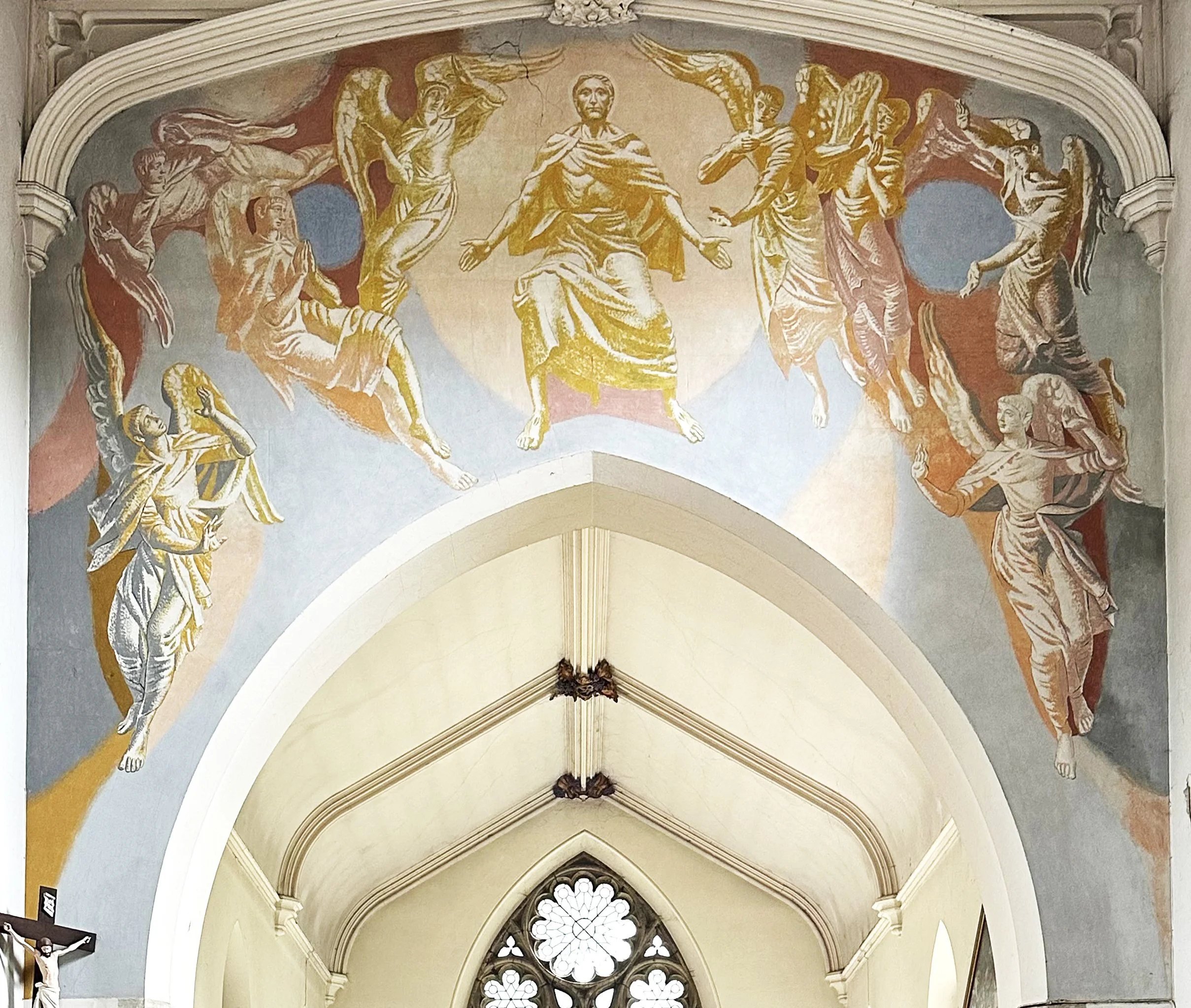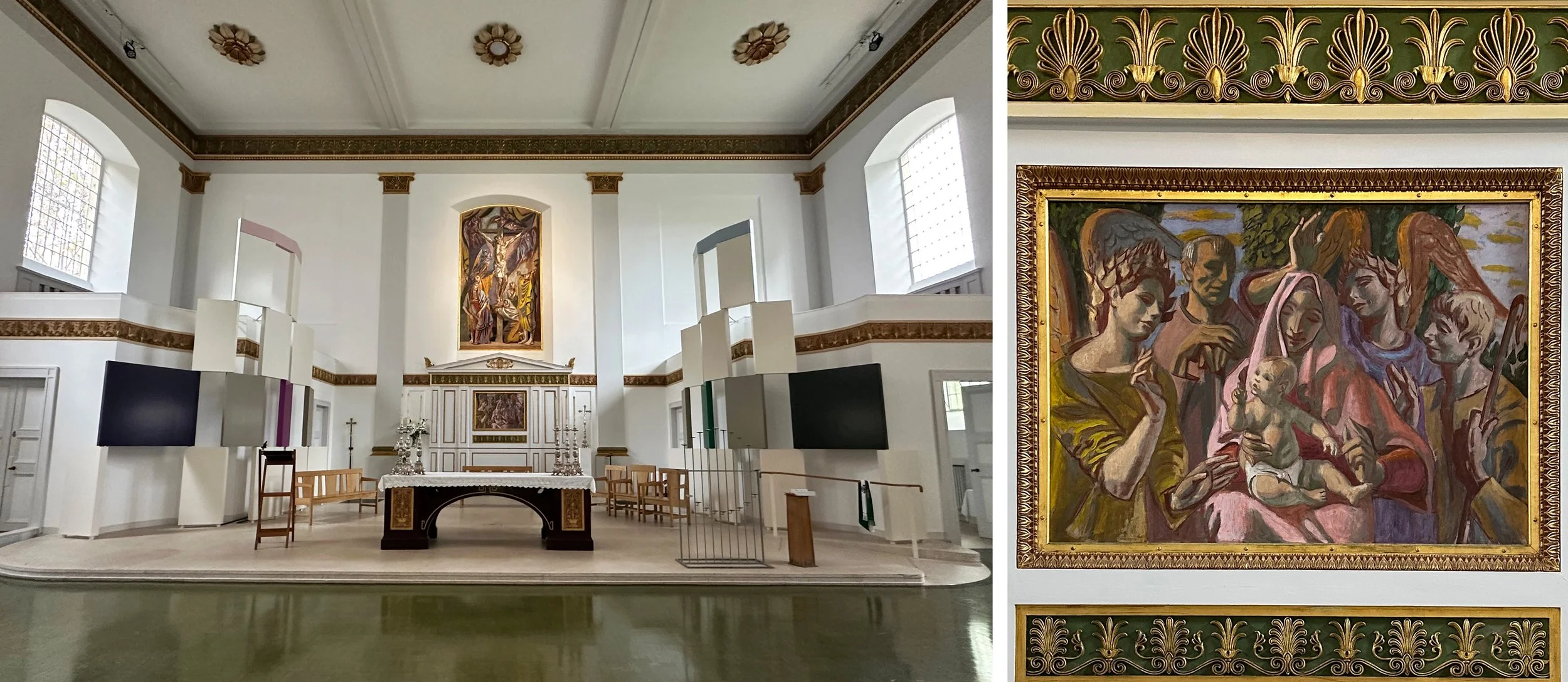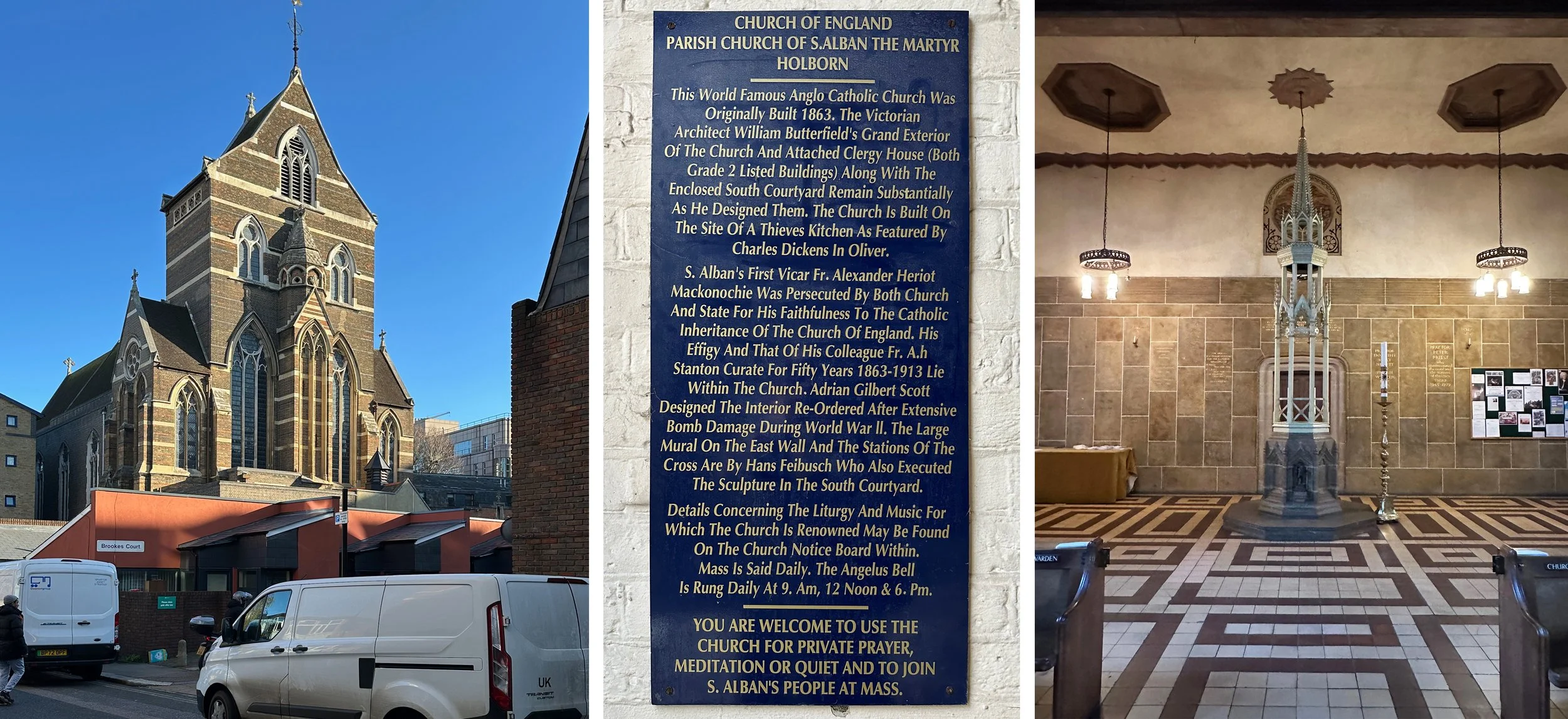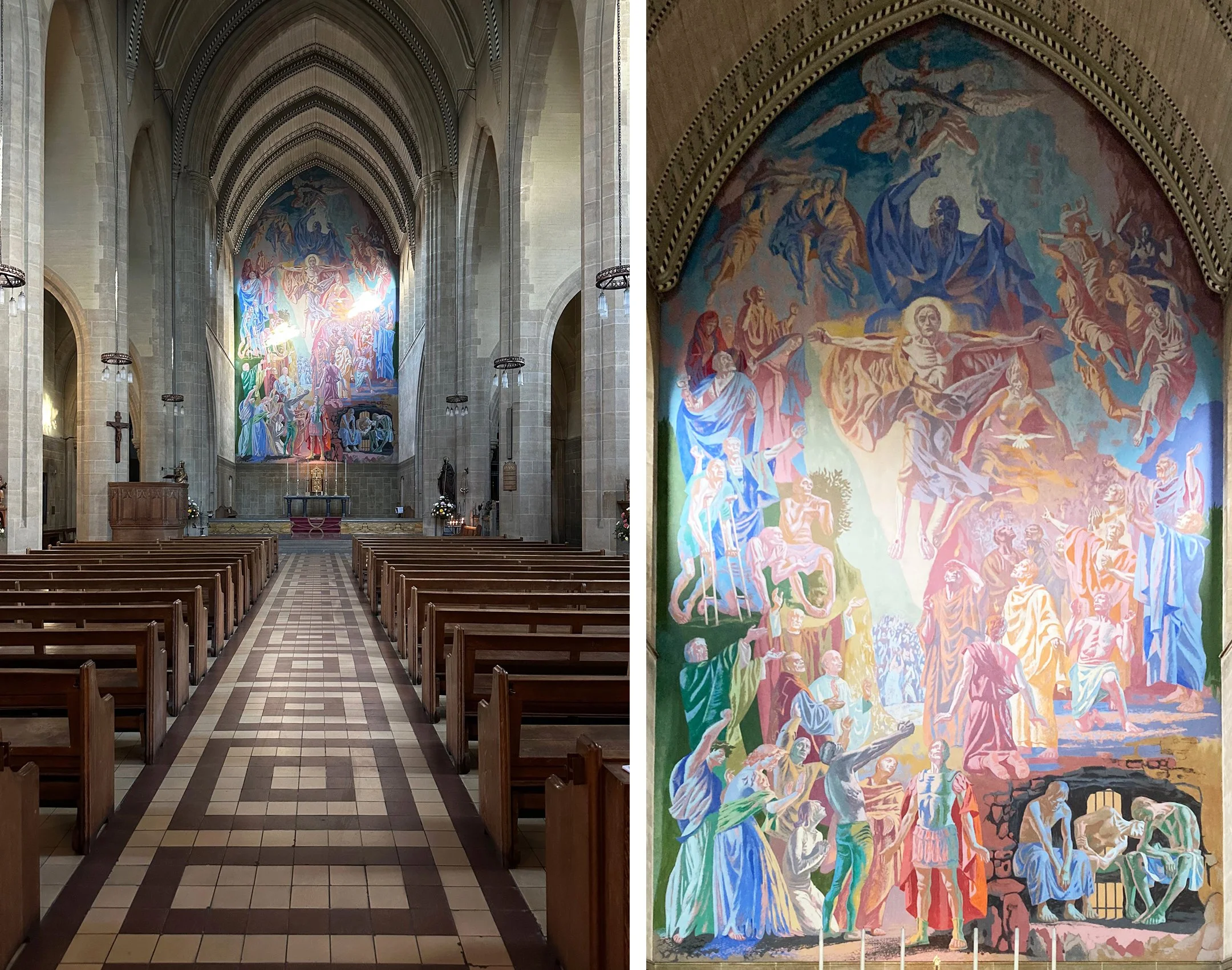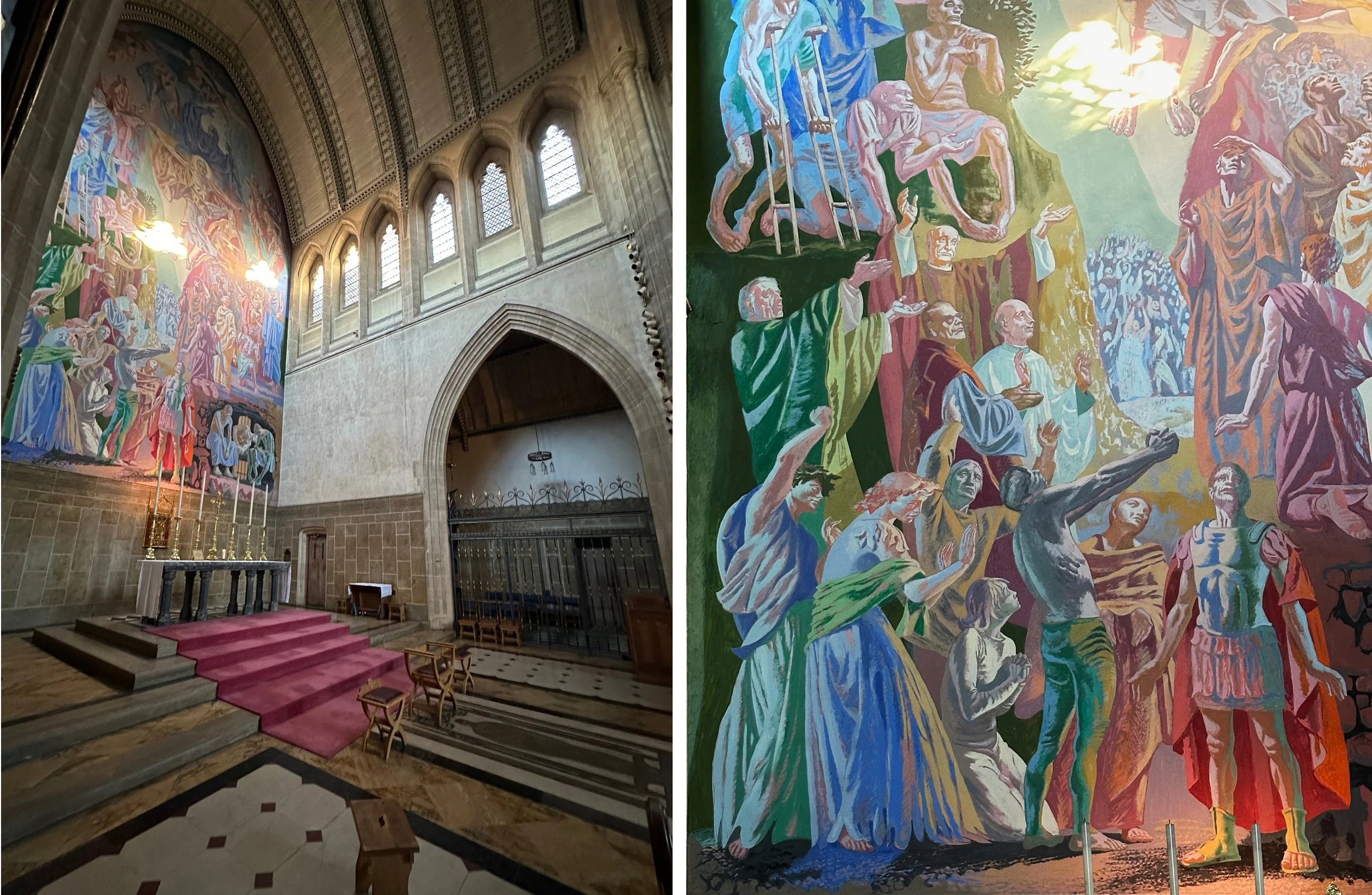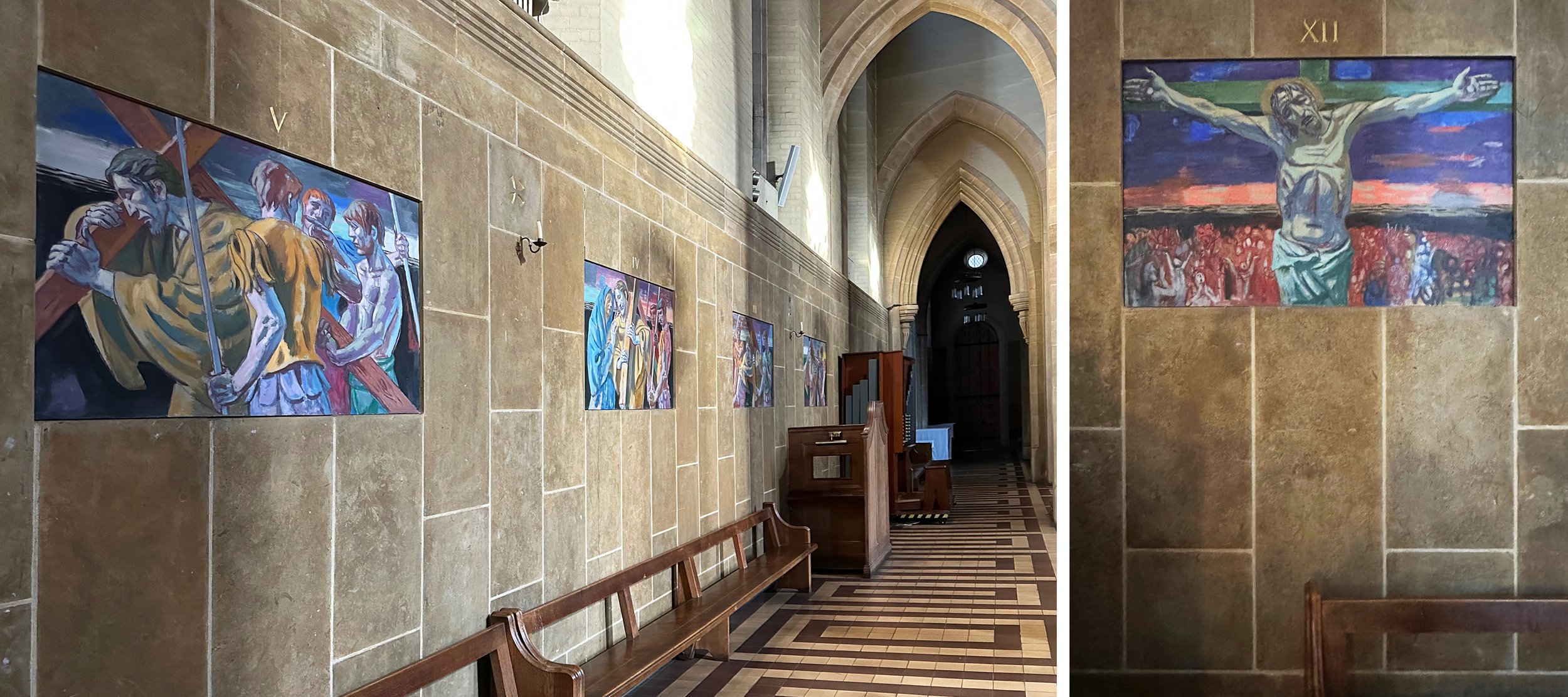Left: The Baptism of Christ Chichester Cathedral 1951. Right: The Ascension Bishop’s Palace, Chichester 1953.
I first saw the work of Hans Feibusch in Chichester Cathedral where his painting, The Baptism of Christ, is part of a significant collection of mid twentieth century artworks. The Baptism of Christ (above left) is called a mural although it doesn’t really look like one, it is framed in white and about the size of a small door - indeed it was initially commissioned to cover up the site of a door in the baptistry. Feibusch was championed by George Bell, the bishop of Chichester who was active as a member of the House of Lords during World War II and who had a particular interest in helping German refugees especially those, like Hans Feibusch, who were Jewish. As a result Feibusch’s work was commissioned for churches throughout the south of England, particularly in Sussex. The mural in the chapel of the Bishop’s Palace in Chichester (above right) is an example I particularly like, with its coloured window and group of people on the left of the fragmented composition.
Left: St Mary’s Church, Goring-by-Sea. Right: Detail of angel from mural on the chancel arch.
I wasn’t keen when I first saw his work, with figures in a style somewhere between neo classical and expressionist, but in light and bright colour combinations. As I’ve seen more examples recently I have found that they really do work as murals, enhancing but not dominating the architecture. At Goring-by-Sea (above and below) the figures seem to float on the chancel wall in a colour range that is more restrained than usual. The details of wings and drapery in the angels that surround Christ in Majesty are decorative and expressive, uplifting even.
Christ in Majesty St Mary’s, Goring-by-Sea 1954.
Left: St John’s Church, Waterloo. Right The Crucifixion 1951.
Among the numerous Feibusch works in London churches, are two in St John’s Church, Waterloo (above and below), installed after the war on the east wall as an alternative to the window that had been blown out during the war. St John’s, built in the Greek Revival style with a facade like a temple, was built in 1822-24 and was restored again in 2022 resulting in a white interior with some imaginative interior walls between which the Feibusch murals take centre stage. The Crucifixion (above right) is a wonderful piece of expressionist painting, in this work you can see his early German influences, in particular Max Beckmann. Underneath is a smaller mural, Adoration of the Shepherds (below right) with figures on the same scale but seemingly cropped and crowded into the gilded frame. It is hard to get the feeling of intimacy from this work when you are looking at it from a distance and as a slightly incongruous part of an interior scheme.
Left: Inside St John’s, Waterloo. Right: Adoration of the Shepherds 1951.
St Alban the Martyr, Holborn. Left: Exterior (west elevation) Right: Interior, lower west wall.
Feibusch’s largest single work is in the church where he worshipped, St Alban the Martyr in Holborn. This is a magnificent, soaring church designed by Butterfield on a cramped site and built in 1861-3. After World War Two bombing it was partially rebuilt and restored by Adrian Gilbert Scott, with the mural and the stations of the cross added by Feibusch in 1966. It remains an Anglo-Catholic church (as described on the church entrance wall, above centre), inside it is quite simple with elegant decoration on the floor, ceilings, walls and in the fittings, rather than being an attempt to recreate the superb detail that was in the original Butterfield interior.
St Alban, Holborn. Looking east with The Trinity in Glory 1966
The Trinity in Glory mural on the east wall (where there was never a window) is over 15 metres tall, a pointed arch filled with figures that circle around the risen Christ, some recognizable people from the church at the time but also in Feibusch’s words “a continuous upward-flowing stream of anonymous worshippers.” The way these figures, in the familiar Feibusch pastel colours, are ordered in overlapping groups rather than with the depth of perspective reminds me of other decorative art forms, like tapestry or even stained glass. When I was there the low sun through a row of clerestory windows threw shapes of light on the mural’s surface that looked just like flying doves, particularly the one over the head of St Alban in the photo below right. A fellow artist, Phyllis Bray, worked with him on many of these murals, I wonder how much of the feel and touch of the painting was hers.
St Alban, Holborn. Left: Details showing the sanctuary and chapel beyond. Right: figure of St Alban in the mural.
There is also a sequence of Stations of the Cross around the nave of the church, beautifully set into the stone walls at regular intervals. Here Feibusch’s more expressionist side returns, with dramatic faces and moody landscape backgrounds. Behind the crucified Christ at number XII (below right) you see a gorgeous sky above a teeming crowd of people in a desolate looking landscape.
In old age, after seeing a film about the Holocaust, Feibusch produced a series of paintings which sought to recapture that nightmare – “the hunting, the running away, the fall into terror”. He formally left the Church of England in 1992, unable to accept the doctrine of the Trinity and shortly before his death, just four weeks before his 100th birthday in 1998, said: ‘I am just a very tired old Jew.’ He was buried with full Jewish rites at Golders Green Cemetery.
Extract from Hans Feibusch: A focus on the website of St John’s Church, Waterloo, where you will find a good biography of the artist.
St Alban, Holborn. Left: North aisle showing 4 of 14 Stations of the Cross. Right: Station XII in the south aisle 1966.


